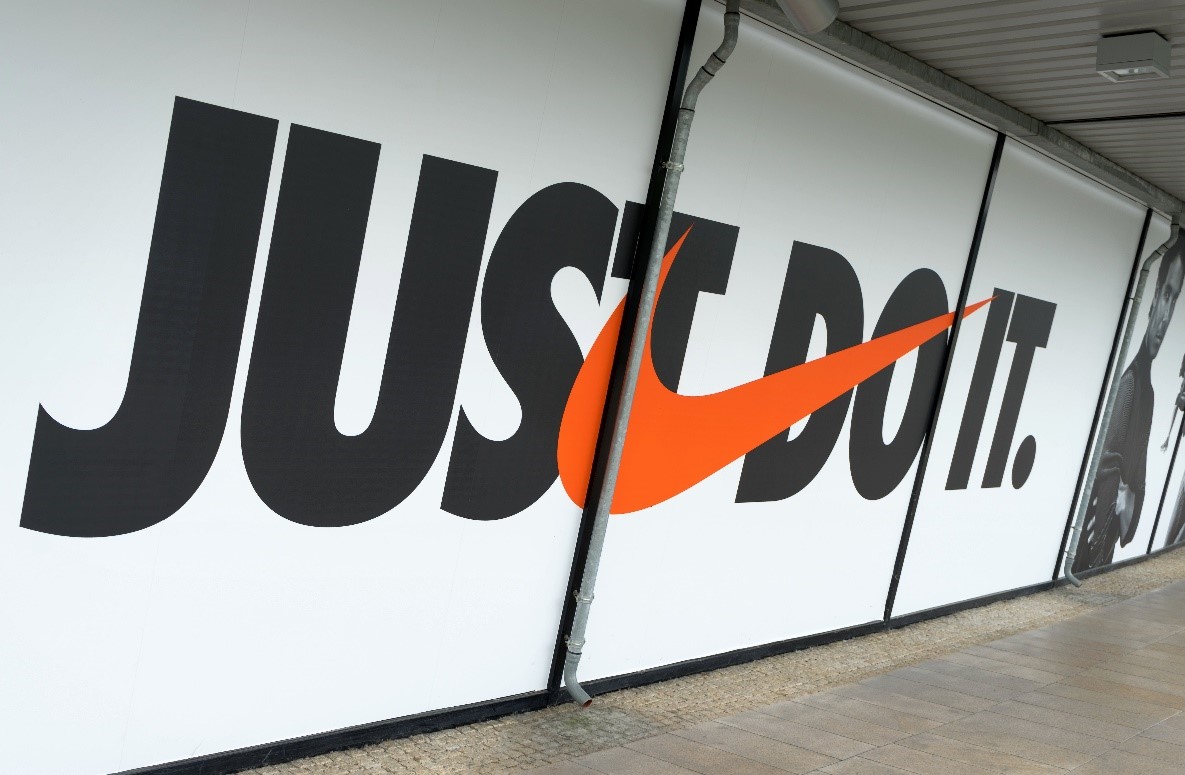When Fed Chair Jerome Powell provided a hawkish outlook for monetary policy, he emphasized that a strong economy would allow the central bank to proceed down this path.
Markets appear to agree as we rallied after news that the Fed could raise rates seven times in 2022.
The biggest risk to the market is a policy miss step where the economy fails to live up to expectations. This means extra scrutiny for earnings reports. Can corporations verify this economic strength?
In steps Dow Component Nike (NKE). The iconic sportwear brand celebrates its 50th anniversary as a company this year. It is in a unique position to provide insight into the global supply chain and retail environment.

Nike reported a solid top and bottom line beat that will boost market confidence. Revenues increased 5% year over year to $10.9 billion, outpacing the $10.6 billion expected. Growth was led by a double-digit increase in NIKE Direct. NKE said its growth would have been even bigger if it had greater quantities of available inventory to meet demand.
The North America segment saw revenues increase 9% y/y while EBIT was flat. Its move toward in-house digital sales continued to pay dividends as NIKE Direct grew 27% in the region. NIKE Digital was 1/3 of sales in N.A..
Q3 EMEA revenue increased 13% while EBIT grew 34%. The EBIT growth was sparked by full price realization and lower average markdown rates. EMEA was a key regional outperformer and drove the upside Q3 revenue surprise.
Revenue in Greater China declined 8% and EBIT fell 19% on a reported basis. This marked a sequential improvement for the region. Nike sees room for growth as the country is embarking on a set of market friendly stimulus policies that should boost consumer spending power. China ranked Nike as the #1 cool and #1 favorite brand in the country.
The company continues to build on its digital capabilities that connect and serve customers at scale. Q3 Digital revenue increased 22% y/y. The mobile app orders were up more than 50% and surpassed Nike.com as the company’s highest share of demand. Digital increased from 23% to 26% of total NIKE Brand revenue in Q3.
Its move toward direct-to-consumer continues has reduced the number of wholesale accounts by more than 50%. Nike plans to continue to drive healthy wholesale growth with its remaining partners. Nike singled out Foot Locker (FL) as a key partner in its wholesale distribution platform.

NIKE-owned inventory levels increased 22% y/y with in-transit inventory now representing 65% of total inventory at the end of the quarter. The company stated that transit times are now more than 6 weeks longer than pre-pandemic levels and 2 weeks longer than the prior year. NKE moved forward its buying time lines to accommodate these extended timelines.
This of course raises the basic issue for these supply chain disruptions, what if that demand dissipates and those pull forward orders end up sitting on the shelves, eventually selling at a steep promotional discount?
Gross Margins increased 100 basis points y/y driven primarily by higher NIKE Direct margins due to lower markdowns, favorable FX rates and a higher full price mix. These gains were partially offset by increased freight and logistics costs.
There are plenty of reasons to believe Nike can continue this momentum. Spring demand is off to a strong start. Nike continues to expect revenue for the full year to grow mid-single digit verse the prior year. The company remains confident that is on track to meet its long-term financial goals.
In Q4, North America revenue is expected to decline y/y. The company expects to see sequential improvement in Greater China as the country is expected to re-open from covid shutdowns. The sequential improvement in China is based on momentum it is seeing in the marketplace in the fourth quarter.
All factories in Vietnam are operational. Nike reported that total footwear and apparel production are in line with pre-closure volumes and forward-looking demand plans.
Inventory supply across all regions is beginning to improve. Transit remains the bigger issue. The company noted these times remain elevated. In the case of North America, these transit times worsened in Q3.
Gross Margins are expected to expand by at least 150 bps as strong consumer demand drives full price realization. The pricing benefits expected in Q4 are being offset by elevated product costs.
Looking ahead of 2023, Nike remains optimistic that its brand strength and strong demand pipeline will be key growth drivers. The sell-side consensus estimate for FY23 revenue is approximately 13%. This may be lofty expectations and could exceeded management’s initial guidance.
Nike is everywhere. Its swoosh can be found on Australian Open winner Raphael Nadal, basketball legend LeBron James, Olympic gold medalist Nathan Chen, Super Bowl Champion Aaron Donald. The Super Bowl halftime show featured hip hop legends Dr. Dre, Snoop Dog, Eminem, all wearing Air Jordans or Converse. It is at the forefront of the metaverse with its partnership with Roblox (RBLX). The brand truly lives at the intersection of sport, media, music and increasingly, technology.
Shares of NKE fell from $180 in November of 2021 to $116 on March 18, a 55% decline. The stock has since rebounded $20 points to the $137 area. It will test the 50-sma ($139) for resistance in the coming sessions. The stock’s ability to break above these resistance levels will allow us to judge buyers sentiment in the retail sector.
The report provides us insight into the global supply chain landscape. Issues certainly remain but it is encouraging to see its factories in Vietnam are fully operational. The comments around the supply chain in North America are more concerning. But they are seeing improvement as we progress into the company’s fourth quarter.
All told, this was a positive report for the markets. We will need to see continued verification that the economy is as strong as Jay Powell tells us. Otherwise, the fear of a policy miss step will grow.
